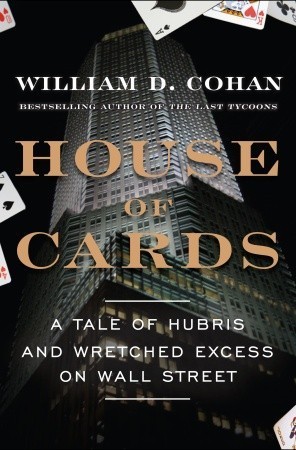Six years postrecession a tale of Wall S Main St
Post on: 16 Июль, 2015 No Comment

Heading into a new year and six years after the Great Recession began, small-business owners are modestly growing and adding jobs—not roaring back to life like the stock market.
It feels totally different to be a small-business owner in America on Main Street than on Wall Street, where they’re popping Champagne corks, said Beth Solomon, president and CEO of the National Association of Development Companies (NADCO), a Washington-based trade group that supports Small Business Administration lenders.
Job creation among smaller employers traditionally has jump-started recoveries. But this time, the trend has remained largely absent.
Private sector job creation in November indeed tilted toward businesses with fewer than 50 employees, which added 102,000 jobs.
Jin Lee | Bloomberg | Getty Images
A trader wears 2014 novelty glasses on the floor of the New York Stock Exchange.
But new small-business positions topped 100,000 for only two of the reported 11 months last year. And most of those gains were in the services area, often associated with relatively low-wage sectors, including retail, leisure and hospitality—not the quality. goods-producing jobs that come with benefits and higher, full-time paychecks. ADP figures for December employment are scheduled to be released Jan. 8.
Beyond modest job creation, tight credit markets still hover over Main Street. Small-business commercial real estate and equipment finance loan volume is at its lowest level in nearly three years, according to NADCO.
Other issues loom over small-business owners, including Obamacare and health-care costs, increases in the minimum wage and a general suspicion that after last year’s partial government shutdown. policymakers may bring more surprises for 2014.
In addition, as the Federal Reserve retreats from keeping interest rates low, borrowing costs for businesses are expected to rise.
All these variables are influencing smaller employers to remain on the sidelines or to pursue measured growth.
Small businesses are bracing for more challenges, Solomon at NADCO said. Capital is not flowing sufficiently, period. And that’s why we’re still not getting the small-business job creation we need.
Source: Dog Haus/Doghaus.com
Andr Vener is a partner at Dog Haus, a gourmet hot dog business with three locations in Southern California.
A lending ‘thaw’
Tight capital, of course, doesn’t mean lending stood still in 2013.
Facing less regulatory scrutiny thanlarger institutions, small to midsize banks are carving growing niches, with that trend continuing this year, said Frederick Cannon, an analyst for financial services firm Keefe Bruyette & Woods in New York.
Bank loan balances should continue to grow in line with nominal GDP in 2014, he said, with smaller banks getting a disproportionate share of the growth.
Both New York-based Signature Bank and Silicon Valley Bank. headquartered in Santa Clara, Calif. posted loan growth of more than 20 percent last year, versus single-digit loan growth for larger banks, Cannon said.
Credit standards overall remain tight for small businesses, he added, but I think we’re seeing a little thawing of that.
Small-business owner André Vener agrees.
Vener is a partner in Dog Haus, which sells gourmet hot dogs. They have three locations in and around Pasadena, Calif. with expansion plans for 2014.
Vener and fellow venture partners—veterans in the fine dining business—dipped into their own cash reserves and eventually their parents’ pocketbooks to cover the cost of the three outlets. The owners launched three years ago, when the recovery was just gaining traction, and decided to bypass traditional lenders.
At the time, in 2010-11, banks really weren’t lending, Vener recalled. It was too much time, too much paperwork. It was pretty much hard to get a loan for a small business. It was a disaster.
With three locations up and running now, and more than 40 franchises sold in more than three states, banks and other potential investors are courting Vener and his partners.
I believe it’s a sign of our success, a sign of the economy and a willingness to lend, Vener said.

In fact, small-business optimism edged higher in November—reversing an October decline. December data is scheduled to be released later this month.
(Read more. Where American entrepreneurs are striking next)
Rise of alternative lending
Despite the slightly higher sentiment reading for November, more entrepreneurs said they were pessimistic and expect a weakening economy during the next few months, according to the National Federation of Independent Business (NFIB).
And financing was not small employers’ top business problem. Owners instead cited taxes, regulations, red tape and weak sales as among their top concerns, according to NFIB data.
Few firms think now is a good time to expand or make capital outlays or hire much, said NFIB Chief Economist Bill Dunkelberg.
Of course, new entrepreneurs with a thin track record have the biggest hurdle in securing financing—especially as the recovery remains uneven. That’s partly why alternative lending sources have emerged to attract those who may have been turned down by banks.
Lending by nonbanks should expand this year with the re-emergence of non-bank consumer and commercial finance companies, said Cannon at Keefe Bruyette.
In fact, more hedge funds have stepped in to fill the shoes of traditional lenders. Direct- or asset-based lending funds attract capital commitments to make loans to midsize companies, which are overlooked by banks because of stricter lending standards.
Wall Street-Main Street gap
It’s this push to riskier, more expensive forms of borrowing that only reinforces the gulf between a cautious Main Street and upbeat stock market. U.S. stocks last week closed 2013 at records. with the broad S&P 500 posting its largest annual jump in 16 years and the blue chip Dow posting its biggest gain in 18.
The extraordinary gains of the stock market in 2013 have not been matched in the paychecks of ordinary working people and small businesses, said Michael Santoro, professor of business ethics at Rutgers University. Outlined in his book, Wall Street Values , he argues that market fortunes have become increasingly separated from the rest of society.
Solomon at NADCO said that the Wall Street-Main Street disconnect is a tale of two Americas.
—By CNBC’s Heesun Wee. Follow her on Twitter @heesunwee .














